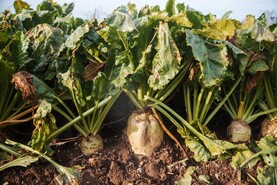Tillage area is set to decline in scenarios outlined in the Teagasc Marginal Abatement Cost Curve. The full Teagasc report, released in the past week, shows methods that can be used to reduce greenhouse gas emissions and store carbon in agriculture.
In two scenarios outlined in the document, the area of crops is predicted to decline. The base scenario outlines that crop land area would decrease by 8% by 2030 compared to 2022, due to higher profit per hectare in grassland farming. In another scenario the cropland area is projected to contract at a slower rate, but still with a 5% decrease from 2022 to 2030.
Despite this, the document still aims to increase straw incorporation and the use of organic manures on tillage land, as well as increasing cover crop area. However, it states: “There is limited scope to increase cropland measures due to the small size of the sector.”
The document also states that diversification to tillage farming from livestock can help to reduce emissions.
The Government’s Climate Action Plan sets out a target to increase tillage area to 400,000ha by 2030. That’s an increase of over 50,000ha from 2022.






 This is a subscriber-only article
This is a subscriber-only article









SHARING OPTIONS: